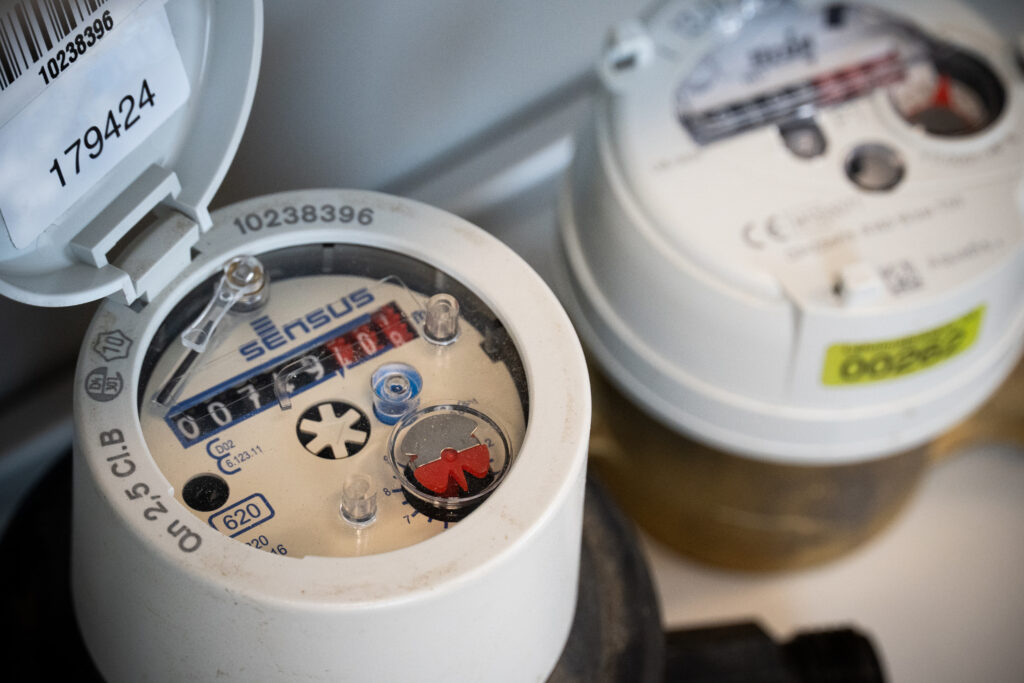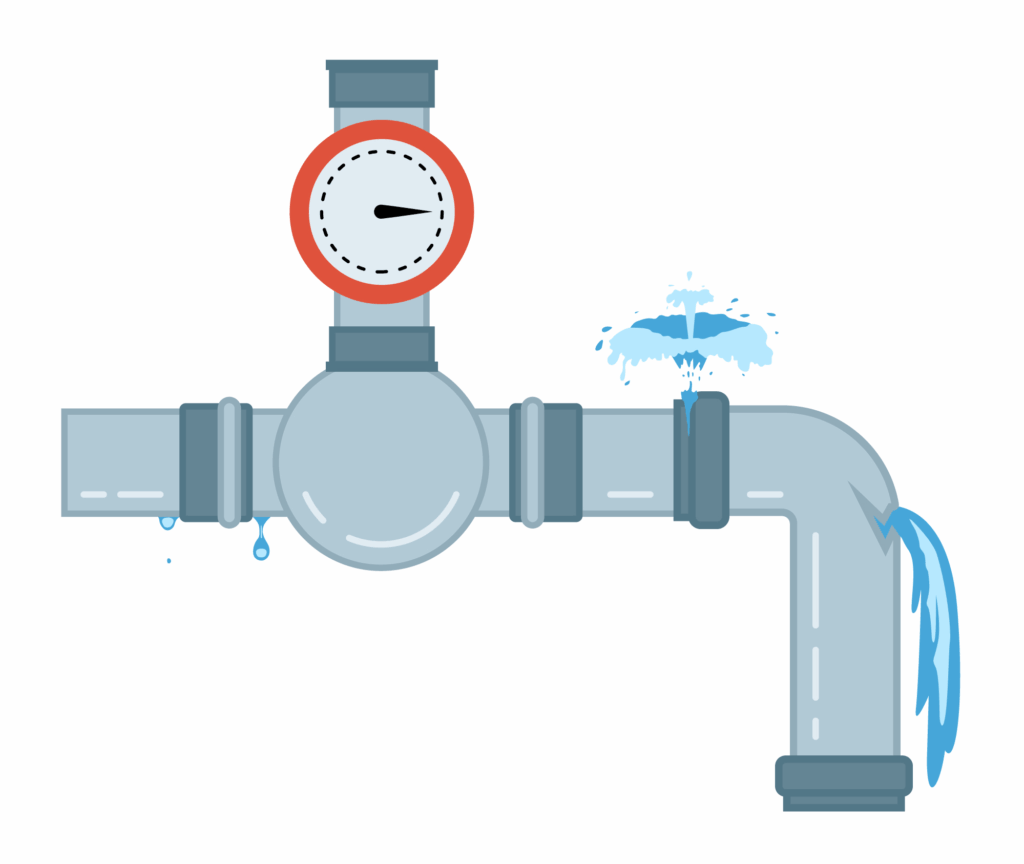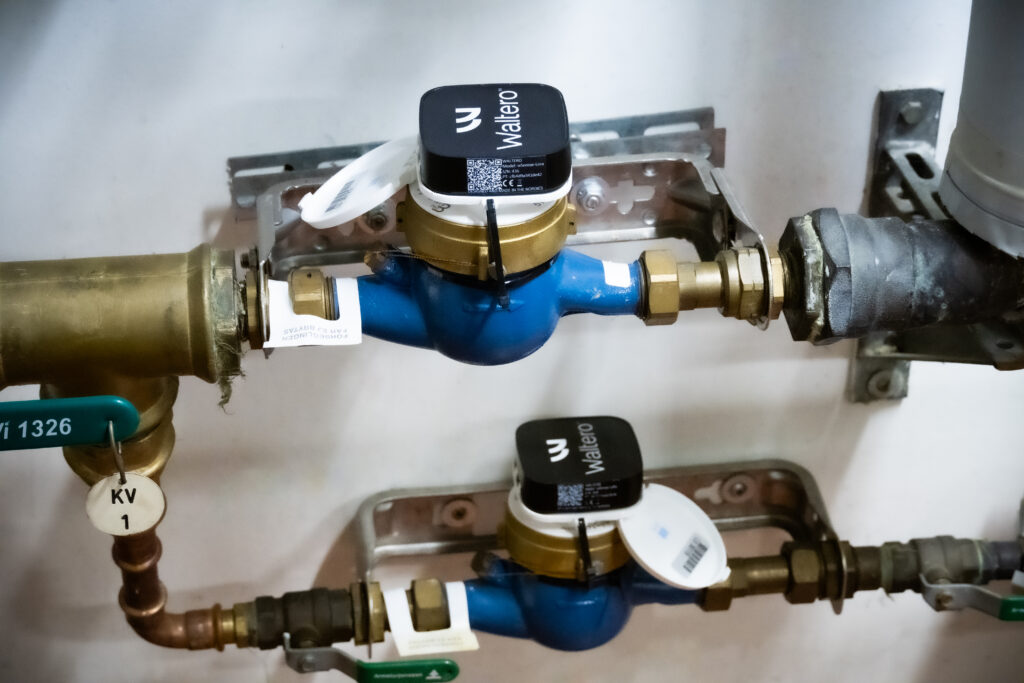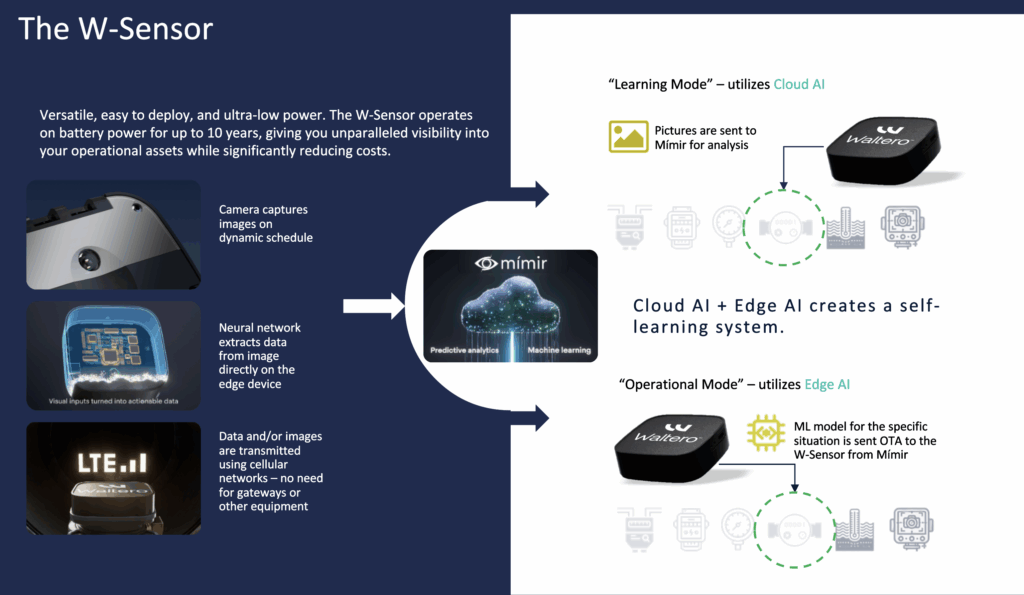Why are Pulse Water Meters Costing Utilities More?

Hichem Krayem
Growth ManagerIntroduction
If you’re managing a water utility or overseeing infrastructure operations, you’ve likely encountered the frustrations that come with traditional pulse water meter systems. At Waltero, we’ve witnessed countless utilities struggle with accuracy issues, maintenance headaches, and mounting operational costs tied to these aging technologies.
In this comprehensive guide, we’ll explore why pulse water meters are becoming obsolete, the game-changing advantages of smart sensor technology, and how forward-thinking utilities are leveraging AI-driven water management to transform their operations.
What Is a Pulse Water Meter and Why Are They Everywhere?
A pulse water meter is essentially a traditional mechanical water meter equipped with a basic sensor system that converts water flow into digital pulses. These systems typically use reed switches—simple sensors made of two conductive metal reeds inside a sealed glass tube—to detect the movement of a magnet attached to the meter’s rotating dial.
Every time water flows through the meter and the dial completes a revolution, the magnet passes by the reed switch, generating a “pulse” that represents a predetermined volume of water (usually 10 liters per pulse). This signal can then be read by basic on-spot manual labor reading, making it an outdated retrofit solution for utilities monitoring their existing mechanical infrastructure, the traditional way.

The appeal is obvious, pulse water meters seem to offer an old-school mechanical system. Many utilities have invested heavily in these systems, but are facing numerous problems with this outdated solution that has turned into a costly illusion for utilities.
The Hidden Problems Plaguing Pulse Water Meters
Many problems come with legacy systems and old methods of water metering, from which we can mention:
Accuracy Issues That Compound Over Time
The most significant challenge with pulse water meters isn’t immediately obvious. It’s the gradual degradation of measurement accuracy. Our research indicates that pulse loss issues occur frequently due to mechanical problems, electromagnetic interference, aging infrastructure and environmental factors.
Here’s what happens in practice, a reed switch experiencing “chattering” (rapid opening and closing due to vibration or electrical interference) might record false pulses. Over extended periods, a meter showing 10,000 liters of actual usage might register 10,005 l or 9,997 l on the pulse counting system. While this might seem negligible, these errors compound across thousands of cubic meters.

The reality is stark, as up to 89% of mechanical meters become inaccurate over time, often going “slow” after just two years of operation. This translates to billions of dollars in lost revenue globally due to water losses alone. However, the solution is available. Smart water sensors and IoT-enabled metering solutions are revolutionizing the way utilities measure, monitor, and manage high-value assets and resources.
Environmental Vulnerabilities
Traditional pulse water meters face a number of challenges:
Temperature extremes: Expansion and contraction affect measurement accuracy
Water quality issues: Sand, rust, and suspended solids clog measurement mechanisms
Electromagnetic interference: External sources can trigger false pulse counts
Vibration sensitivity: Passing vehicles can cause reed switch chattering
Maintenance and Operational Headaches
Beyond accuracy issues, pulse water meters create ongoing operational challenges:
Limited diagnostic capability: Basic pulse systems can’t identify the source of problems
Manual troubleshooting: Technicians must physically visit each meter to diagnose issues
Manual labor readings: Technicians must physically visit each meter to collect data and register
Replacement complexity: Upgrading requires significant infrastructure overhaul changes
Data gaps: System failures often go unnoticed until customer complaints arise
Smart Water Sensors: The Technology Transformation Utilities Can’t Ignore
The water utility industry is experiencing a digital water transformation, with the global smart water metering market projected to grow from $4.67 billion in 2024 to $14.06 billion by 2034.
This utility digitalization move isn’t just hype. It’s a fundamental shift driven by technological advances that solve the core problems plaguing traditional systems and make the leap towards realizing smart infrastructure for utilities.
Advanced Metering Sensors Technologies
Waltero’s W-Sensor and Mimir cloud platform bring a new dimension to smart water management by enabling seamless scalability across utilities of any size.
Designed for effortless integration, Waltero’s sensors can digitize water facilities without disrupting ongoing operational processes, ensuring continuity and reliability. By combining advanced sensing, edge AI cameras with machine learning and intelligent data analytics, the W-Solution deliver cost-effectiveness through reduced maintenance, optimized performance, and data-based decision-making. An ideal choice for utilities aiming to modernize sustainably and efficiently.

Ultrasonic water meters represent a quantum leap in measurement technology. Unlike mechanical systems, these meters use sound waves to measure flow with no moving parts to wear out or clog. They maintain accuracy at extremely low flow rates, which is something traditional meters struggle with due to the minimum flow needed to overcome rotor resistance.
Electromagnetic flow meters offer another sophisticated solution, using magnetic fields to measure water velocity with exceptional accuracy across various flow conditions. These systems are particularly valuable for utilities dealing with challenging water quality conditions.
Non-magnetic sensors using technologies like the MTL100 chip provide immunity to magnetic interference, a common cause of pulse counting errors in traditional systems.
IoT Integration and Connectivity
Modern smart water sensors leverage IoT water utility metering capabilities through advanced connectivity options:
LoRaWAN technology enables low-power, wide-area networking perfect for battery-operated devices with 10+ year lifespans. This connectivity allows utilities to remotely monitor thousands of meters from a customizable unified dashboard without the infrastructure costs of traditional wired systems.
NB-IoT implementation provides cellular connectivity for real-time data transmission, enabling immediate response to leaks, tampering, or system failures.
At Waltero, our sensors support multiple connectivity options—LTE-M, NB-IoT, LoRa, and WiFi—ensuring optimal coverage regardless of location or infrastructure constraints. Enabling near real-time IoT asset tracking and velocity in remote asset monitoring.
Advanced AI-Driven Analytics and Predictive Maintenance
The real game-changer isn’t just better sensors, it’s AI-driven water management that transforms raw data into actionable insights.

Modern smart sensor systems incorporate:
Predictive maintenance: AI algorithms analyze sensor data to forecast failures before they occur, achieving high accuracy in predicting equipment issues. Hence, reduce risks for utilities.
Pattern recognition: Machine learning identifies complex usage patterns and anomalies that human operators might miss.
Real-time analytics: Edge computing processes data locally, reducing response times by 30%
Automated leak detection: AI-powered systems can identify and locate leaks within minutes of occurrence
Data Analytics: Waltero’s AI capabilities excel in data integration and scalability, seamlessly unifying information from diverse sensor networks and legacy systems into a single intelligent cloud platform. Utilities gain a complete real-time view of their operations, enabling smarter planning and resource allocation. By continuously learning from growing datasets, the AI strengthens over time, delivering increasingly accurate forecasts and insights that scale with expanding utility networks.
Why Smart Metering Sensors Are Better Than Pulse Water Meters
The fundamental difference between smart metering sensors and traditional pulse water meter systems goes far beyond simple data collection—it’s the difference between reactive maintenance and proactive optimization. Smart sensors represent the cornerstone of tomorrow’s smart grid technology, offering seamless integration capabilities that transform isolated water meters into intelligent nodes within a comprehensive utility ecosystem.
Unlike pulse systems that merely count mechanical rotations, smart sensors provide rich, contextual data that enables AI-driven water management at scale. They communicate bidirectionally with central management systems, support over-the-air updates, and integrate effortlessly with other smart infrastructure components, including electrical grids, gas systems, and municipal IoT networks and smart grids. This integration capability is crucial as utilities evolve toward holistic smart city initiatives where water, energy, and data flow as interconnected resources.
From a cost-effectiveness perspective, smart sensors deliver exponentially greater value despite higher upfront costs. They eliminate the hidden expenses that plague pulse systems—frequent calibration visits, manual troubleshooting, and revenue losses from measurement errors. More importantly, they generate actionable intelligence that drives resource efficiency across the entire utility network. Predictive analytics prevent costly emergency repairs, dynamic pressure management reduces energy consumption by up to 20%, and real-time leak detection prevents millions of gallons of waste annually.
The vision ahead is clear. Smart utilities powered by interconnected sensor networks will operate as self-optimizing systems, automatically balancing supply and demand, predicting maintenance needs, and responding to changing conditions without human intervention. Traditional pulse water meters, with their limited data output and mechanical vulnerabilities, simply cannot participate in this intelligent infrastructure revolution. For utilities serious about modernization and long-term sustainability, smart sensors aren’t just better technology—they’re the essential foundation for the next generation of water management excellence.
The Cost-Benefit Reality: Why Smart Sensors Win Long-Term
While the upfront investment in smart sensor technology might seem higher than retrofitting existing pulse systems, the long-term economics strongly favor modern solutions.
Direct Cost Savings
Reduced truck rolls: Remote monitoring eliminates most manual meter reading visits
Faster leak detection: Early identification prevents water loss and infrastructure damage
Improved billing accuracy: Eliminates revenue loss from inaccurate mechanical meters
Lower maintenance costs: Fewer moving parts mean less frequent repairs and replacements
Operational Efficiency Gains
Real-time visibility: Instant access to consumption data and system status
Automated alerts: Proactive notification of leaks, tampering, or system failures
Data-driven decisions: Historical analytics enable better resource planning
Regulatory compliance: Detailed reporting capabilities simplify regulatory requirements
Strategic Advantages
Smart sensor deployments provide competitive advantages that traditional pulse systems simply cannot match:
Customer engagement: Detailed usage data enables better customer service
System optimization: AI analytics identify opportunities for efficiency improvements
Future-proofing: Upgradeable systems adapt to changing requirements
Integration capabilities: Seamless connection with other utility management systems
Making the Smart Choice: Your Next Steps
At Waltero, we understand that transitioning from pulse water meters to smart sensor technology represents a significant decision. The key is starting with a clear understanding of your current challenges and future goals.
Ready to explore how smart sensor technology can transform your water utility operations? The future of water management is here, and it’s more accessible than you might think.
You can begin with a pilot deployment to demonstrate value before full-scale implementation. Our Waltero Exploratory Kit provides a risk-free way to experience the benefits of advanced sensor technology and cloud-based data management without long-term commitment.

The evidence is overwhelming. Utilities that embrace smart water networks today will have significant competitive advantages tomorrow. The question isn’t whether to make the transition—it’s how quickly you can implement these game-changing technologies.
Real-World Success Stories: Utilities Making the Switch
Anglian Water’s Smart Grid Innovation
Anglian Water invested £7.5 million in Britain’s smart water grid in Ely, Cambridgeshire. The system integrates IoT sensors, including smart meters, flow and pressure sensors, and acoustic leak detection equipment. The innovative AI decision engine enables system-level automated decision-making, dramatically reducing response times and improving overall efficiency.
Texas Municipal Water Utility District Initiatives
Many Texas utilities faced challenges with its aging 3,000-meter system and insufficient leak detection capabilities. After implementing smart meter technology with real-time monitoring, they achieved:
Improved leak detection and faster response times
Reduced customer complaints about billing accuracy
Enhanced operational efficiency through automated readings
Better resource allocation based on real-time consumption data
The Future Is Here: What’s Next for Water Utilities
The trajectory is clear. Utilities that continue relying on pulse water meters will find themselves increasingly disadvantaged. Here’s what forward-thinking organizations are preparing for:
Emerging Technologies
Digital twins: AI-powered virtual replicas enable real-time system optimization
Computer vision: Advanced recognition systems achieve 99%+ accuracy in automated meter reading
Edge AI computing: Near real-time processing capabilities at the sensor level
Market Forces Driving Change
Regulatory pressure: Increasing requirements for water conservation and efficiency reporting
Climate challenges: Extreme weather events demand more resilient infrastructure
Workforce constraints: Aging utility workforce requiring more automated solutions
Customer expectations: Demand for real-time usage data and better service
In this new landscape, the winners will be the utilities that embrace innovation today—building smarter, more resilient, and customer-centric systems that redefine the future of high-value asset monitoring and smart water management.
Conclusion
In conclusion, the debate of pulse water meter vs smart meter is no longer just a technical comparison. It’s a defining choice for the future of water utilities.
Pulse meters, with their mechanical limitations and hidden costs, belong to the past, while smart meters represent a proactive, data-driven approach that enables efficiency, sustainability, and resilience.
Utilities that embrace smart metering today position themselves not only to reduce operational risks and costs but also to deliver the intelligent, customer-focused services demanded by tomorrow’s smart cities.



